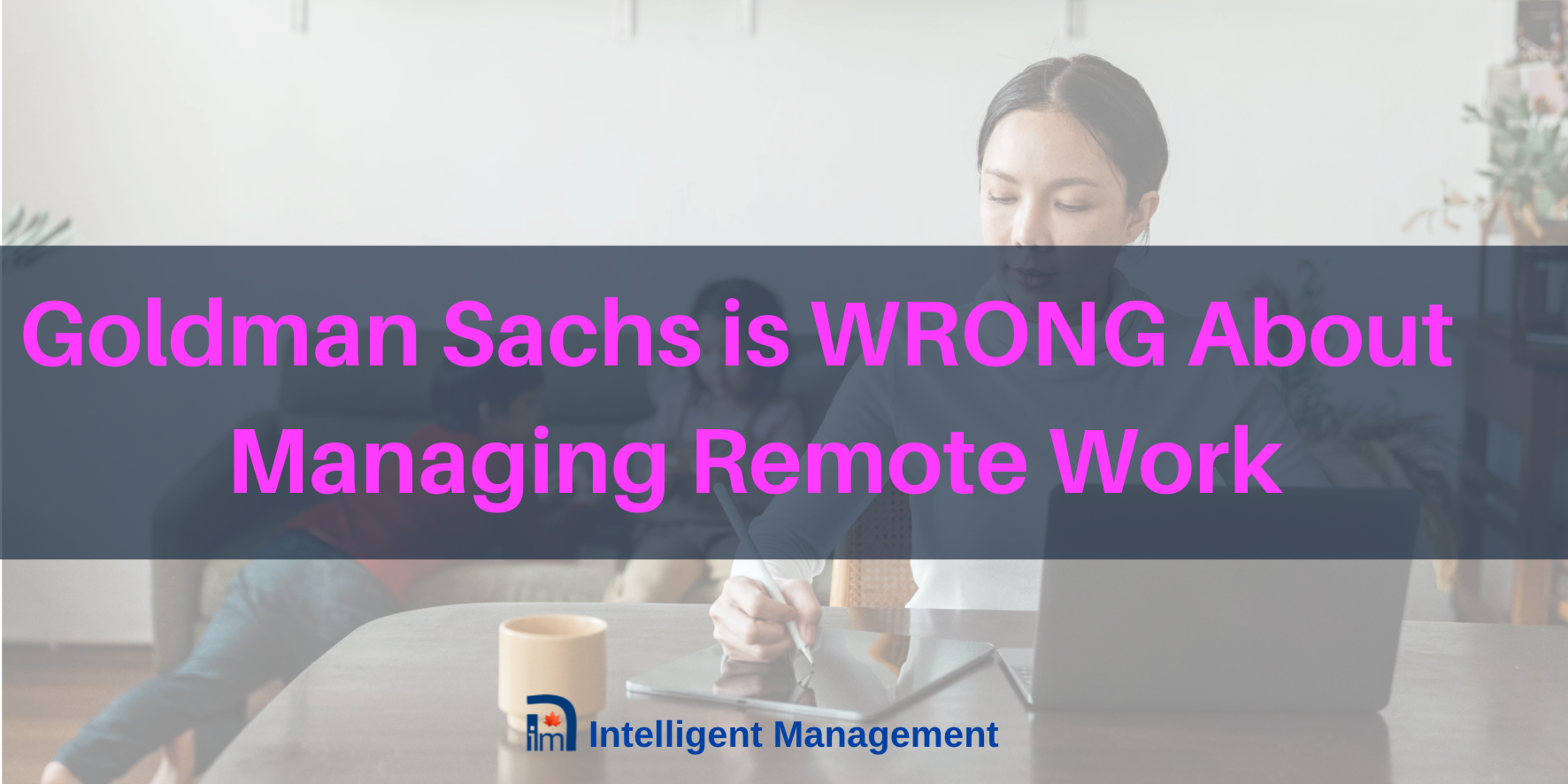
Goldman Sachs wants its people back on the office five days a week. Thank you Janet Granger for sharing the article with us: https://www.cnbc.com/2022/03/14/goldman-sachs-wants-workers-in-office-5-days-a-week-and-other-companies-could-follow.html
The CEO of Goldman Sachs even considers remote work an “aberration” and said “I do think for a business like ours which is an innovative, collaborative apprenticeship culture, this is not ideal for us and it’s not a new normal…”
This sounds a lot like fear of not being able to control the way people think and behave.
Other CEOs are doubtful about managing remote work and their concerns include:
- The belief that lower-level work must be more closely observed to be productive
- The notion that flexibility is a perk to be earned
- The idea that leaders are somehow better suited to be responsible about being productive than others
In the Theory of Constraints, we refer to these biases as “Assumptions”. They are mental models and we would certainly want to challenge them.
The problem is, how do we challenge deep-rooted assumptions, or mental models? How do we get past our limiting beliefs to find a better solution , instead of just repeating a “command and control” model from an industrial age that is no longer adequate or even appropriate? How can we take advantage of a great opportunity to improve and evolve the way people experience work?
If we truly want to solve the issue of establishing an effective way to decide who works in the office and who works from home, we need to alter the framework of how we perceive the problem.
It’s worth mentioning a powerful example of changing our point of reference in this quote from NASA astronaut, Reid Wiseman:
While spacewalking I realized something: I used to think I was scared of heights but now I know I was just scared of gravity.
What is work?
How do we alter the framework of how we perceive the problem of who should work remotely? We can’t leave the planet, as Wiseman did, but we can step back by asking some deep questions. We have to find a way to forgo a command and control management style but, at the same time, have a powerful mechanism to ensure that activities are properly coordinated and everybody is accountable.
At Intelligent Management, asking this question led us to look at the fundamental elements that make up the work of an organization. Just as the key constituents of life are hydrogen, oxygen, carbon, nitrogen, phosphorus, and sulphur, we realized that the basic constituents of work are repetitive processes and one-off projects. At this point, a new organizational design emerged, based on the management of a complex, strongly interconnected and synchronized Network of (processes and) Projects.
What is a company?
At Intelligent Management, we see clearly that organizations and companies are systems, and that means that they are a network of interdependent components that work together to accomplish the aim of the system.
Over the years, we have come to understand how companies can unlock the potential of everyone in their organization by building the organization as a directed and synchronized Network of Projects. This involves mapping competencies needed for projects and scheduling those competencies instead of resources. As some resources have several competencies, this allows for much greater flexibility in scheduling projects and allows people to work more meaningfully by contributing all of their abilities and talents towards a common goal. When work is well designed to accelerate flow, when artificial barriers are removed and people can contribute with all their abilities, we can build not just a future but a better future of work.
We can much more easily decide who can work remotely because we understand the interdependencies. It becomes clear who needs to do what and when. We don’t need to control the individual by making them sit at a desk in an office for a certain number of hours. We control the interdependencies. This is why we built Ess3ntial – to provide a digital tool where all the competencies are on one platform and can be synchronized as a Network of Projects using a powerful algorithm based on Critical Chain. (see www.ess3ntial.com)
A practical support for managing remote work
Throughout the pandemic, we have been able to switch from working onsite with clients to working remotely with great ease thanks to years of consolidated practice using the Thinking Processes from the Theory of Constraints. People always want practical solutions. This is yet further proof that nothing is more practical than a good theory.
We would urge anyone seeking to collaborate on projects at a distance to explore the Thinking Processes. Not only do they provide a visual approach that is easily shared and easy to consult, they actively promote people’s ability to think systemically about problems and how to overcome them. They provide a catalyst for focus and reduce dramatically the time that people spend in meetings.
If you want to evolve the way your company works and flourishes, contact Angela Montgomery at intelligentmanagement@sechel.ws
SCHEDULE AN INTRODUCTORY CALL WITH US
Intelligent Management works with decision makers with the authority and responsibility to make meaningful change. We have helped dozens of organizations to adopt a systemic approach to manage complexity and radically improve performance and growth for 25 years through our Decalogue management methodology. The Network of Projects organization design we developed is supported by our Ess3ntial software for multi-project finite scheduling based on the Critical Chain algorithm.
See our latest books Moving the Chains: An Operational Solution for Embracing Complexity in the Digital Age by our Founder Dr. Domenico Lepore, The Human Constraint – a digital business novel that has sold in 43 countries so far by Dr. Angela Montgomery and ‘Quality, Involvement, Flow: The Systemic Organization’ from CRC Press, New York by Dr. Domenico Lepore, Dr. .Angela Montgomery and Dr. Giovanni Siepe.






Leave a Reply